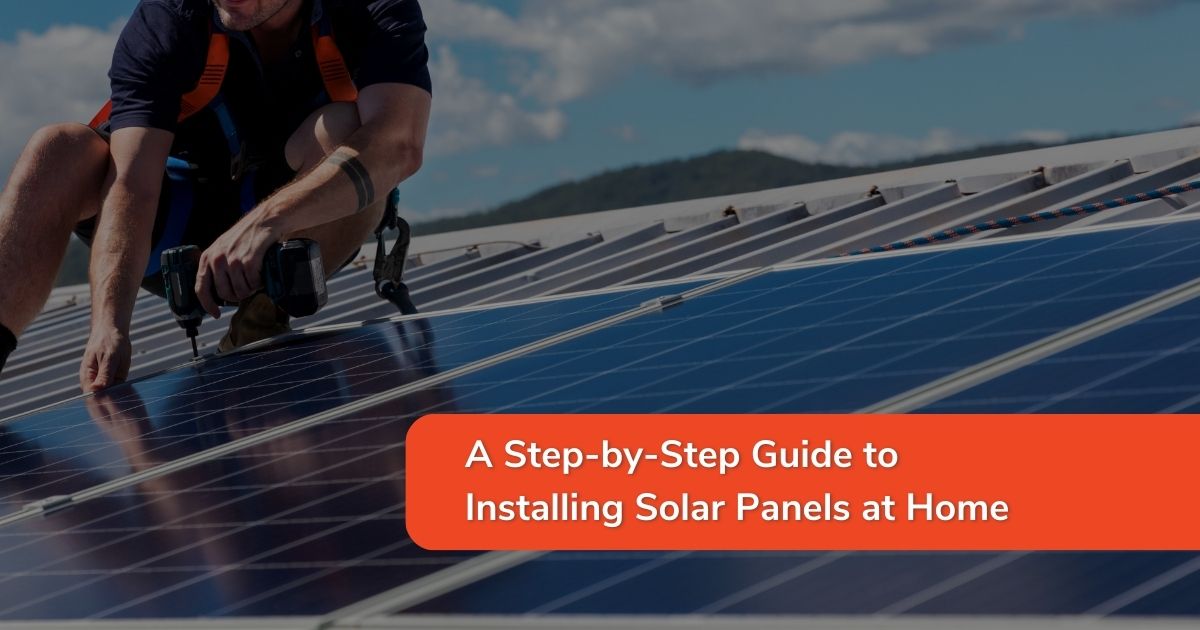A Step-by-Step Guide to Installing Solar Panels at Home

The gradual shift towards renewable energy is no longer just a trend but a necessity, especially for homeowners looking to reduce their carbon footprint and cut down on electricity bills in the long run. Installing solar panels can be a crucial step in this direction, converting the abundant sunlight into sustainable power. If you're in Australia, a country blessed with more than its fair share of sunshine, harnessing solar energy is both a logical and financially sound decision given the range of incentives offered.
In this guide, we'll walk you through the process of installing solar panels on your Australian home, from the initial assessment to maintaining your energy-producing infrastructure. Let's embark on the journey to a greener, more energy-efficient future for your household.
Step 1: Assessing Your Home's Suitability
Before diving into solar power, it's important to assess your home's readiness to support a solar system. Considerations like roof orientation and the absence of shading throughout the day are critical factors in maximising the sun's energy. Furthermore, structural integrity is non-negotiable. Ensuring your roof can bear the weight and stress of the solar panel setup is a safety essential. Consulting with a professional installer or a structural engineer can provide the necessary expertise in this evaluation.
Step 2: Calculating Your Energy Needs
Understanding your household's energy consumption patterns is the next step. In addition to examining your utility bills and identifying peak usage times, it's important to also consider if there is a need for solar batteries. This will help you estimate the size of the solar panel system you'll need. This system sizing is pivotal in ensuring that your panels can generate enough electricity to cover your consumption, with allowances for periods of low sunlight and for potential future growth.
Step 3: Researching and Selecting Solar Panel Providers
Quality and reputation are crucial for solar panel providers, especially considering the strict Australian regulations on solar energy installations. It's important to research and select a provider known for reliability and customer service, as well as holding the necessary certifications and accreditations. Look for a track record of installations similar to what you require, and ensure that the types of solar panels they offer – monocrystalline, polycrystalline, or thin-film – align with your home's requirements.
Step 4: Obtaining Necessary Permits and Approvals
In Australia, solar panel installations are subject to local regulations and building codes. This means you may need to obtain a variety of permits, including planning permits and compliance with the Clean Energy Council's guidelines. Your chosen solar installer should be well-versed in these requirements and can often assist with the paperwork and approval process.
Step 5: Financing Options and Incentives
The Australian government provides several avenues to make solar panel installations more affordable, including rebates, subsidies, and, feed-in tariffs. Some solar providers also offer pay-as-you-save schemes, and loans to offset initial costs. Investigate which financial programs you're eligible for, and consider getting multiple quotes to ensure you get the best financial deal from your solar provider.
Step 6: Installation Process
The installation itself is a job for professionals. From mounting the solar panels on the roof to installing inverters and connecting the system to your home's electrical network, every step must be executed with precision. Safety is paramount during this phase, and a reputable installer will comply with industry standards and best practices.
Step 7: Monitoring and Maintenance
Once your solar panels are up and running, it's important to monitor their performance regularly to catch any issues that may arise. Most modern systems come with monitoring software that allows you to track energy production. While solar panels are low-maintenance, periodic cleaning and inspections are necessary to ensure optimal efficiency.
In conclusion, the road to solar panel installation in Australia is not without its turns, yet the journey is so worth the destination. You'll not only play your part in reducing greenhouse gas emissions but also enjoy significant savings on your electricity bills over the years. The time has never been better to embrace solar power, and our team at Smart Energy Answers is here to support your every step. Take control of your energy future, and let the sun be your guide to a more sustainable and smart home.
%20(1).png?width=265&height=96&name=www.smartenergyanswers.com.auhs-fshubfsSmart%20Energy%20Answers%20Logo%20(HIRES)%20(1).png)

.png?width=514&height=121&name=Tesla%20Powerwall%203%20(new).png)







